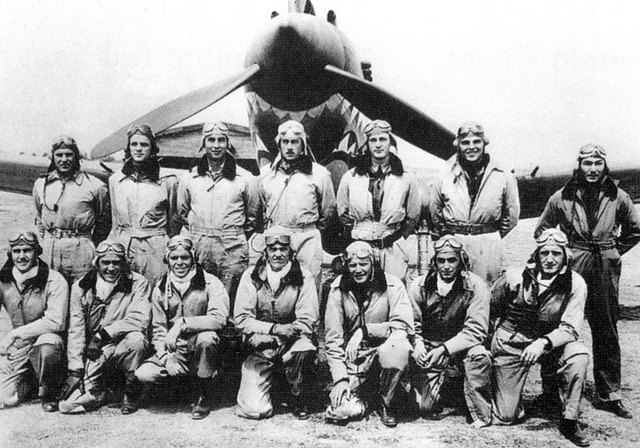Tex Hill – With the AVG in Burma (part 3)
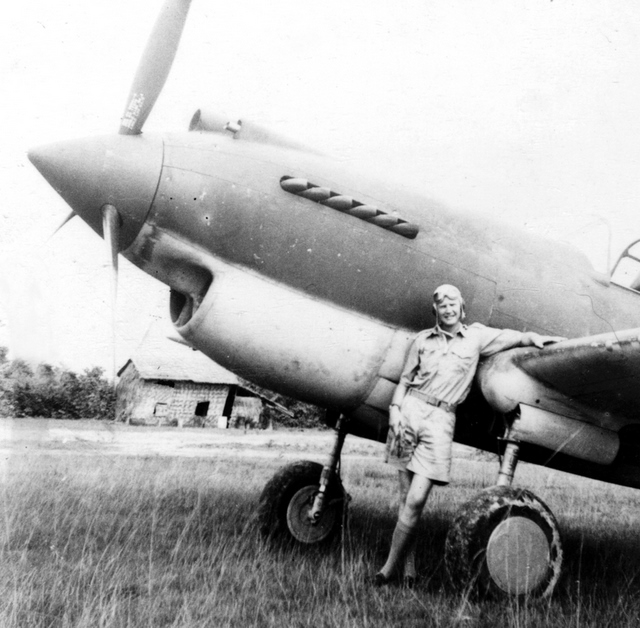
While Tex was with Ed Rector and Bert Christman in Norfolk Virginia, they bumped into their squadron commander and were introduced to a Navy Commander Irvine. Irvine was a recruiter for Claire Chennault, secretly authorized to gather US military pilots and ground crews for the American Volunteer Group. After a discussion about the current state of affairs in China and the Japanese strangle hold on the entire Chinese coast, Irvine indicated that an overland route between Burma and China was the only lifeline left to the Chinese. Irvine explained that he was authorized by President Roosevelt to recruit pilots to help the Chinese. All three men indicated they were interested and Irvine said he would be back in touch.
Tex Hill at Kyedaw Airfield, Toungoo In 1941, notice that the shark motif has not been painted on the P-40s yet. (Flying Tigers Association)
Meanwhile, Tex’s squadron was temporarily assigned to the USS Lexington for another neutrality patrol in the Atlantic. When he got back, he found Irvine waiting for him and gave him the formal offer to enter the AVG. At a later meeting, Tex, Rector, Christman and five other men from the Ranger signed contracts with the Central Aircraft Manufacturing Company (CAMCO) – a front for the AVG in the US – to sail from San Francisco to Burma. Officially discharged from the Navy, it was understood that they can rejoin with no loss in rank or seniority after serving the Far East. The pilots were paid from $600 to $750 a month, a much higher pay than they were getting in the Navy, with a $500 bonus per destroyed Japanese plane.
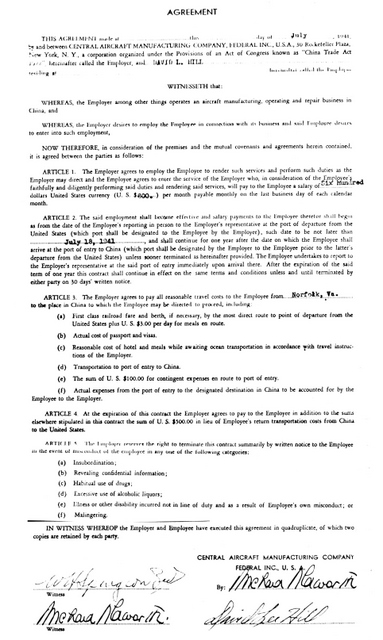
In June, after their goodbyes, 25 men sailed from the Dutch ship Bloemfontein from San Francisco via Hawaii, Australia, and docked at Singapore. After a few days in the famous Raffles hotel, Tex set sailed again on the Penang Trader up the Rangoon River and finally arrived at Rangoon, Burma five days later. From Rangoon, Tex switched to a train to go north toward Toungoo, arriving at night, he was greeted by members of the AVG who had already arrived weeks earlier. By truck, Tex was bought to the Keydew Airfield, where the men will be training in the Curtiss P-40 Tomahawk IIB. The next morning, Tex met Claire Chennualt, the “Old Man” in charge of the AVG.
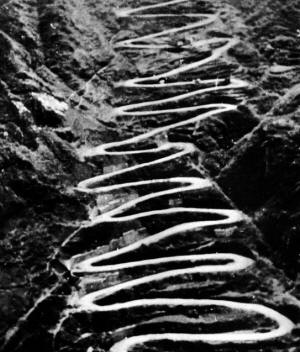
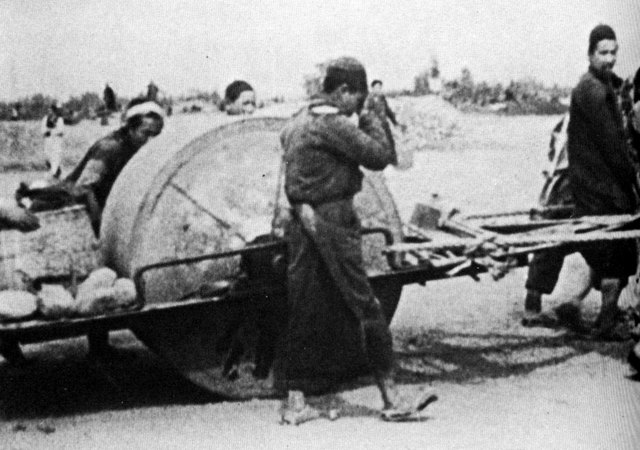
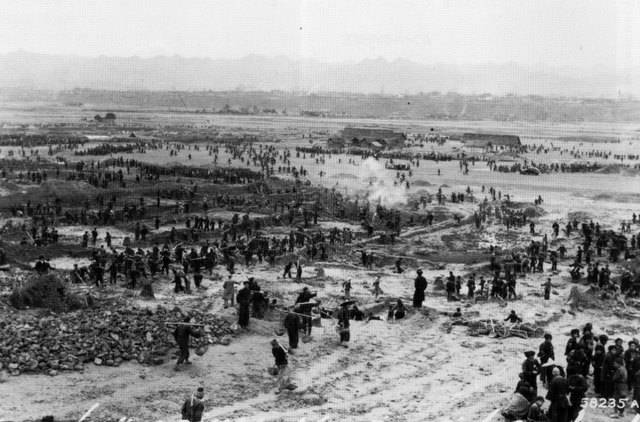
The pilots were divided into three squadrons. Tex was in the 2nd squadron, the Panda Bears, with Scarsdale Jack Newkirk as the squadron leaders. The 2nd squadron was all Navy pilots while the 1st Squadron Hell’s Angels and 3rd Squadron Adam and Eves were comprised of Army Air Corp pilots.
Tex Hill’s P-40 Tomahawk IIB – #48 (p-8134)
![]() Link the article on building a model of Tex’s P40B P-40B AVG – 3rd in series Tex Hil – Monogram
Link the article on building a model of Tex’s P40B P-40B AVG – 3rd in series Tex Hil – Monogram
One Hundred P-40’s were diverted from a British allotment to China to help form the AVG. The P-40 initially had two fifty-caliber machines guns in the nose and two thirty-calibers in the wings. The British had purchased several hundred and requested modifications. These included two additional wing guns, self-sealing fuel tanks, armor behind the pilot, and bullet proof windshields. This plane was designated the Tomahawk II by the British and P-40B by the US. An improved self-sealing fuel tank was added the plane and this model was noted as Tomahawk IIB. However, when Curtiss learned of the diversion to China, it seems they had used spare parts of old inventory to build them – including some older fuel tanks. These were officially designated H-81-A3 for export and thus weren’t quite P-40Bs nor Tomahawk IIB’s – as the Tomahawks IIB’s were designated as H-81-A2. These planes were delivered without guns or Radio, and CAMCO had to purchase these separately. Eventually they would buy radios meant for civilian use, .50 caliber for the fuselage guns, and British .303 Brownings machine guns for the wings. However, they were only able to obtain enough Brownings for the 2nd and 3rd squadrons. The 1st squadron received 7.92mm guns instead. All these factors, combined with minor production changes, and field made changes, created Tomahawks that were different from each other.
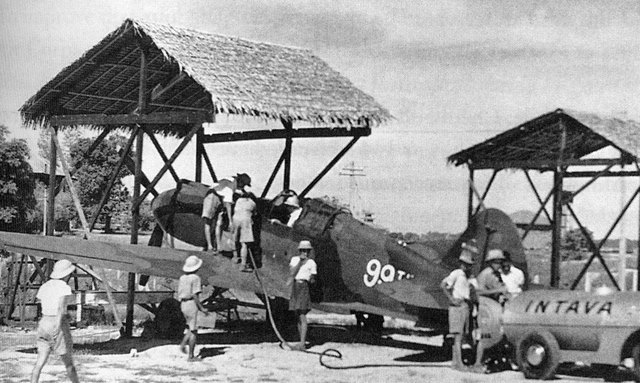
The last P-40B that was assembled in Mingaladon, Burma. It was #99 as one plane was lost at sea while being transported. (National Archives)There’s been much written about the AVG color scheme and I’ll give a short synopsis here, but note that details are still debated between different sources. The Tomahawks carried the British “Temperate Land Scheme” – a disruptive Dark Green over Dark Earth. The colors were laid down with rubber mats to create hard edges. Note that areas were masked out on both wings for the British roundels and the smaller Chinese white star inside blue circle markings did not match this masked area. There were two schemes, “A” and “B”, where they were mirror images of each other. A small number of AVG aircraft received the “B” scheme. The underside was specified as Sky – a light bluish gray color. Note also that these planes were painted by components, so as they were assembled, there were noticeable mismatch of color demarcations from aircraft to aircraft. As operational losses mounted, un-repairable planes were used for parts without any effort to change the markings.

However, Curtiss most likely had substituted DuPont paint as a close approximation of these British colors. No records of the exact colors uses have been uncovered so far, but the upper colors were very similar to the US Army Air Corp Dark Green and Rust Brown. To add to the confusion, certain aircrafts may have received a different brown color – sandy earth brown – that was lighter than the usual brown. On the underside, photographs show a distinctive light gray color instead of the much ‘bluer’ Sky – perhaps DuPont ‘Sky Gray’. It is a matter of conjecture whether gray was substituted or there were confusion regarding ‘Sky’ vs ‘Sky Gray’. Again, the exact gray color used is unknown.
The wheel covers were finished in different colors. Some were gray, dark earth, or Neutral gray. Some had half blue and half orange painted on to test small vanes mounted on the wheels to induce wheel rotation before landing.
The tail had Chinese Air Force serial number, Tex’s plane was p-8134. The side numbers were white numerals about 2 feet high. Tex was originally assigned #48, and these numbers were often painted again on the nose – but not on #48. What’s interesting is that this plane, the one most associated with Tex Hill, never saw actual combat. On December 10th, after coming back in the dark from an attempted intercept of Japanese bombers, Tex landed long, overshot the runway and the plane was damaged and used for parts. Tex thought the P-40 was ‘kind of a doggy airplane’ as it was not very agile.
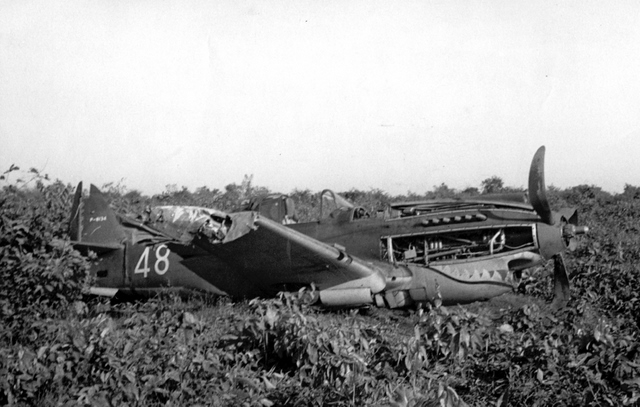
Each Tomahawk had the distinctive Shark’s mouth – an idea borrowed from the RAF after first Squadron pilot, Charles Bond, noticed it in a magazine cover. Each squadron had different versions of their individual mascot painted on – the 2nd Squadron had individual cartoon figures drawn up by Bert Christman, who was a professional cartoonist before he joined the Navy. For Tex, he designed a panda bear wearing cowboy hat, boots, and a gun belt next to a cattle skull. Finally, a blue fuselage band was adopted for the 2nd Squadron. While Christman had designed cartoons for the whole squadron, only a subset was actually painted.
